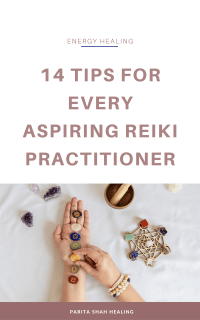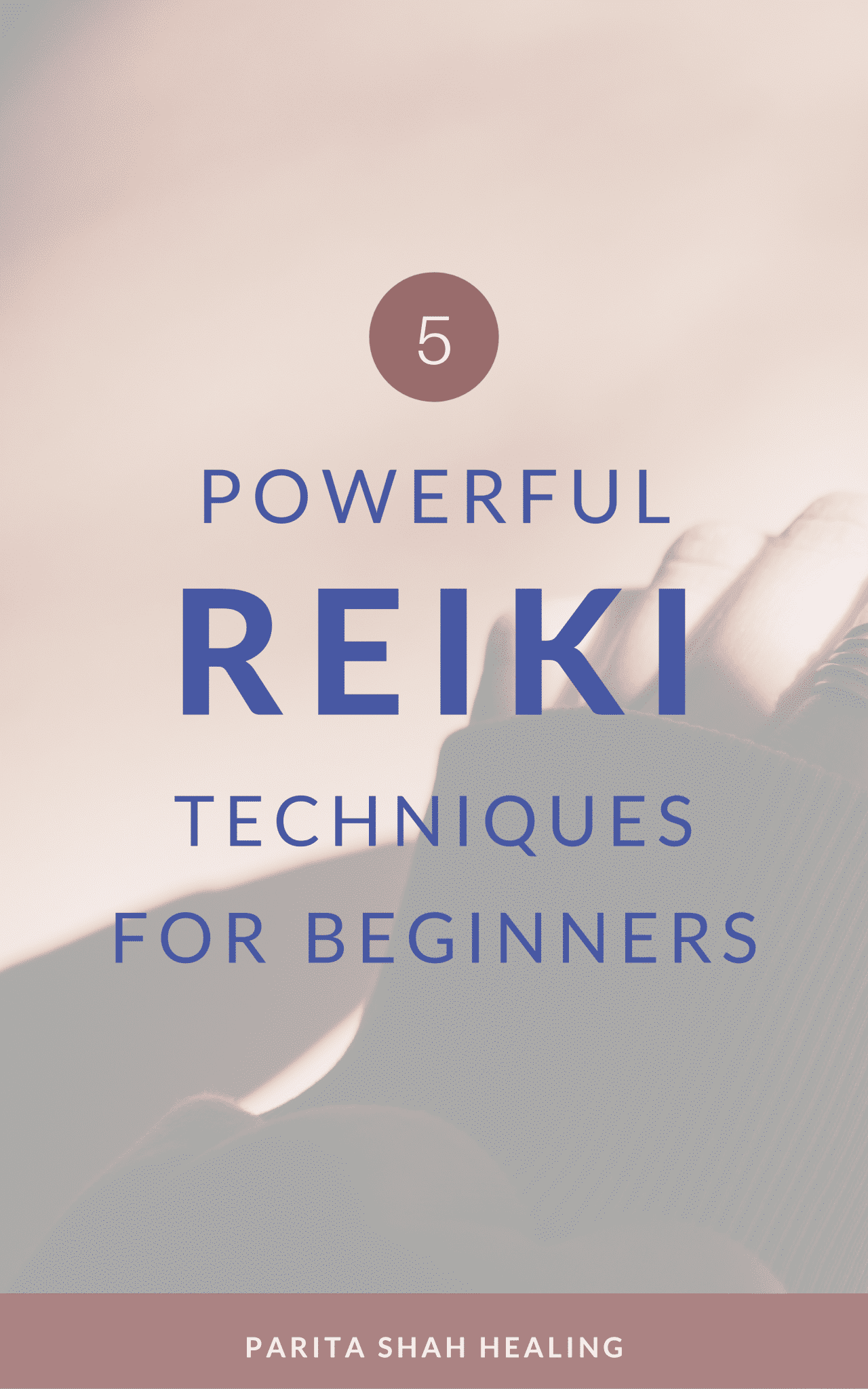

After receiving a diagnosis of an autoimmune condition, and experiencing countless symptoms that didn’t budge through conventional allopathic medicine, Parita sought complimentary forms of healing through meditation and Reiki. Energy healing helped her listen to her body’s innate wisdom, cope with chronic illness, and pursue her soul’s calling - helping others heal through the mind and body connection. With energy healing sessions, courses, and a blog, she shares tools for transformation and self-healing.

Usui Reiki offers powerful meditations, cleansing techniques, and tools to create a system of self-healing. While some lineages have moved away from the traditional focus on meditation, to hands-on-healing, some emphasize the importance of the long-established teachings. In today’s post I am sharing 5 techniques and meditations that honor the traditions of Japanese Usui Reiki. Some are helpful in directing energy, while others help to become sensitive to lifeforce, and purify the mind. Each of these Usui Reiki meditations and techniques can be practiced by itself, or as a part of your hands-on-healing routine.
Joshin Kokyu Ho is a foundational meditation practice in the tradition of Reiki. This practice builds the Hara, improves concentration and clears the energy field.
Practice this meditation for approximately 15 minutes. This meditation can improve the flow of breath, and Reiki in the body and mind. It can lessen the effects of stress, and help you ground your energy field.
If you’re interested in learning Joshin Kokyu Ho, access my free guided Reiki meditation at Empower the Reiki Healer Challenge.
This traditional Usui Reiki healing practice is used to unify the mind with intention, so you can connect with Reiki. Seishin means “spirit, mind, soul, or intention”. Toitsu means “to unite”. This visualization practice also builds the Hara, but helps increase our sensitivity to Reiki.
You may notice your palms become warm, move involuntarily, or tingle. You may also feel spaciousness in your body and mind. The sensations can vary greatly from one practitioner to another so allow yourself to witness your experiences without judgement. Feel free to comment down below with your insights if you do try any of these meditations.
Dry Bathing is a quick routine that you can practice at the beginning of your Usui Reiki meditation or hands-on-healing practice. It is practiced to cleanse the body, mind and spirit. We practice Kenyoku Ho with the intention to clear anything that is preventing us from being an open and receptive channel for Reiki. It can also be used to ground and disconnect from people, and situations that are taking you out of the present moment.
For an illustrated guide to performing Kenyoku Ho and 5 guided reiki meditations for beginners, join the free Empower the Reiki Healer Challenge.
Your hands-on-healing practice can be effectively guided, by scanning the aura or performing a Byosen Scan. Byosen literally means “sick lump” and refers to the buildup of physical, mental, emotional or energetic toxins that can accumulate in an area.
The Byosen Scanning technique should be practiced regularly on yourself and others to help you develop sensitivity. With practice and time, you will begin to understand where Reiki is needed, where the root of an issue is, and where a recipient is holding toxins.
Note: Byosen Scans in Reiki are not meant to diagnose health conditions. When you feel an area of dense energy, you can share that observation with the recipient but be careful not to associate it with any health issues.

This Japanese Usui Reiki meditation allows us to reprogram thoughts and patterns. “Nen” translates as thought. “Tatsu” translates as to reach, attain, or notify. “Ho” means method. You can use this healing meditation to connect with the subconscious and release habits and beliefs that aren’t serving you.
These traditional Usui Reiki meditations and techniques are often taught in Reiki Level 1 training, but whether you’re a beginner, or have been practicing Reiki for years, it’s helpful to come back to the foundational practices. They help us in maintaining energetic hygiene, building the Hara, and balancing the mind. Other elements of your Reiki practice such as the Precepts, mindfulness, attunements, and hands-on-healing may be easier to practice as you develop a steady meditation practice.
Which of these meditations are a part of your daily self-healing practice? Do you practice a meditation or a technique that I didn’t mention? Leave a comment below so we can chat!

Parita intuitively connects with clients around the world to share reiki and chakra balancing. In a 60 minute call, you can discuss and clear energetic blocks that may be holding you back from physical, mental, emotional and spiritual wellbeing. Allow her to support you in awakening to your true light.
Share this blog
© 2023 Parita Shah, All rights reserved
Very nice meditation s
Thank you for sharing!